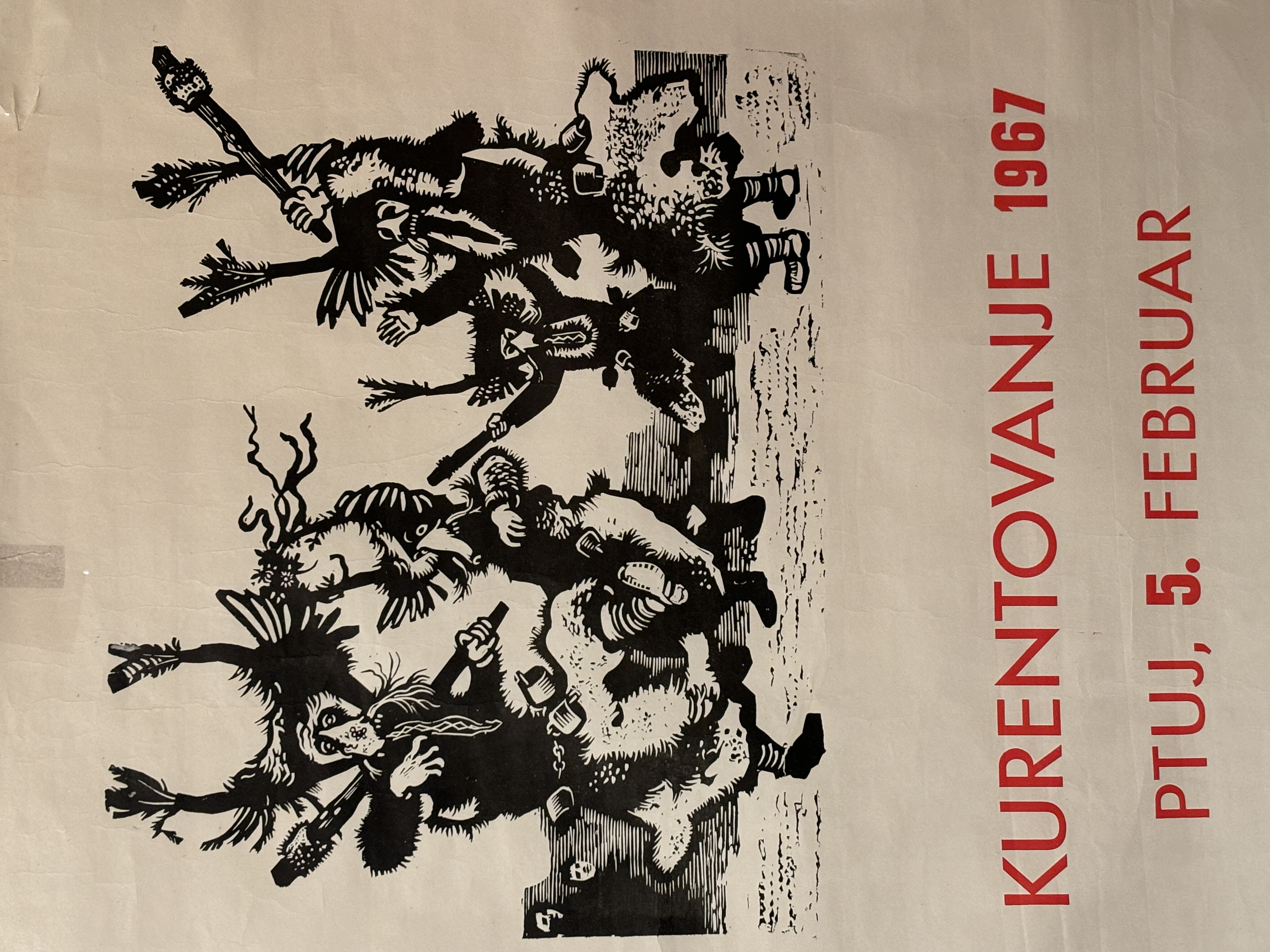
Kurenti as portrayed on a poster for the Shrovetide carnival festival Kurentovanje by the Yugoslav artist France Mihelič. Photo and poster from the private collection of the author.
Siegfried is one of many products of three years of work and research undertaken on and in Slovenia. During my extensive travels there (including fifteen trips to Ptuj) many people showed me folk traditions and told me folktales. Native to Styria, Kurent is the most famous ethnographic character in Slovenian folklore. Sometimes a mysterious fiddler, other times a mischevious Dionysian god, other times still a priapic symbol of fertility, Kurent is unique to Slovene mythology, however his origins remain rather mysterious. When I was spending three months researching the artist France Mihelič for a piece in Protean Magazine, understanding Kurent was key to understanding Mihelič, who used the character in a wide swath of his work. During that time, I read books on the subject, the most interesting being Miheličev Kurent "Mihelič's Kurent" by Milček Komelj, however even Komelj and Mihelič himself, who lived in Ptuj before WWII and was active in the preservation of folk traditions at midcentury during the Yugoslav era when such customs were considered backwards, remain unsure of exactly when in history Kurent first showed up. People in Ptuj say that Kurent is pre-Slavic, which implies primordial ancestry. Assumedly, he would've been known during the 12th century, even when Styria was under German rule. However the Kurentovanje carnival procession, which includes many other folk characters beyond Kurent, is hotly contested. Some say it originated in the 16th century, others in the 18th or as late as the 19th century. I felt like I couldn't write about Ptuj, even fictionally, without writing about Kurent. While I myself have been to (a now very touristified) Kurentovanje, Siegfried's reaction towards Kurent is based off interviews I did with friends who grew up in Ptuj, who pretty universally found Kurentovanje terrifying and offputting towards women, even as very young children.
The most rich Slovene folk story repositories are by the 19th century writer Janez Trdina, who mostly concerned himself with the Western part of Slovenia. The story (Povest o Kurentu) about Kurent and the vine (originally, in Trdina, the lost man is from Carniola) can be found (along with many others mentioned in this work) in English in this academic repository of Slovene folklore (p. 25). The story about Kurent and the apple was one I was first told by a tour guide on my first visit to Ptuj and have more or less just repeated it as I heard it, which was as an aside. The story of the raven is from Franc Kramer's 1911 anthology, with some changes made by me. Because I personally prefer to work from Slovenian sources while cross-referencing with the English ones (I don't like a lot of the translations and find them expressionless despite being technically accurate), and because I am also the person telling this particular story to all of you, all of these tales in Siegfried are in some ways a mix of translation and original reimaginations of existing folklore. While these may not pass anthropology school with flying colors, writers since the dawn of time have been doing similar things. Many of the stories can be found in the link provided above, which I read first and then used to locate the originals. There will be other stories in Siegfried including at length, and these will have their own notes even though this is all fiction and I technically don't have to say anything about it. I merely have an essayist's nagging citational anxiety and want people to be interested in Slovene Folklore.


